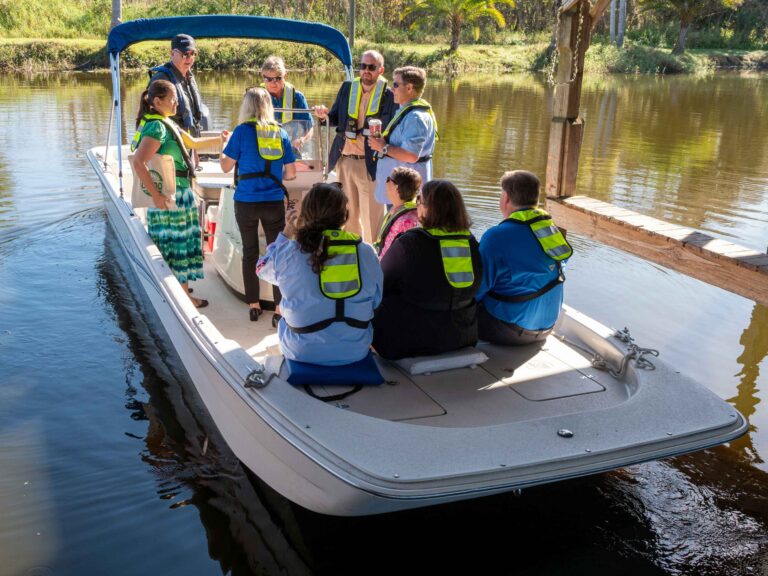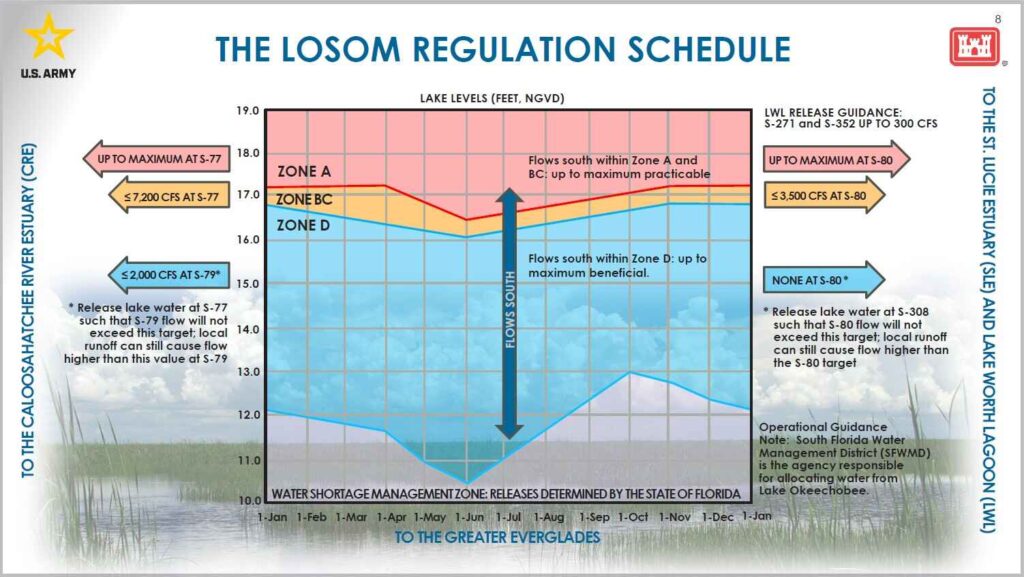
TEXAS
Settlement Reached in Golden Pass LNG Standoff
A bankruptcy court has approved a settlement between Zachry Holdings and Golden Pass LNG that will allow Exxon Mobil and Qatar Energy to hire a new lead contractor to complete the LNG plant in Port Arthur. The new lead engineering, procurement and construction contractor will be Chiyoda International Corp. The project, which is one of two large U.S. LNG facilities, was previously delayed due to cost increases and disputes between the parties. The court’s decision will allow the project to move forward, with a focus on getting more than 6,000 local workers and vendors back to work. Zachry Holdings will relinquish control of the project and cannot direct vendors or workers. Read more
Houston to Evaluate Safety of Nine Bridges
The city of Houston has been awarded a $2 million grant to evaluate the possibility of improving nine bridges that were threatened by floodwaters during Hurricane Harvey. The grant is part of the Bridge Investment Program, which was established by the Federal Highway Administration to address concerns related to climate change. The program aims to identify areas for improvement and modernize bridges to ensure they are safe and can withstand future natural disasters. The city will use the grant to study the feasibility of raising the bridges, improving safety features, and adding accommodations for cyclists and pedestrians. Read more
West Texas Orphaned Oil Well Blowouts Studied
A recent study by Southern Methodist University has linked the practice of injecting oilfield wastewater underground to a series of toxic water blowouts in West Texas. The study suggests that the wastewater has leaked from its containers into subsurface pathways, accumulating in an underground aquifer and putting pressure on aging wells. This pressure is increasing and may lead to more blowouts. The study’s author, Vamshi Karanam, has called for further research into the underground pathways contributing to these blowouts. The issue has become a major concern for local residents, with some calling the orphaned wells that are springing back to life “zombie wells.” Read more
Widespread Energy Outages in Houston Spark Investigation of Power Company
After Hurricane Beryl caused widespread power outages in the Houston area, CenterPoint Energy, the electric utility company responsible for the affected area, has come under investigation by the Texas Attorney General’s office. The investigation will examine allegations of fraud, waste, and improper use of taxpayer-provided funds. CenterPoint has faced criticism for its communication and restoration efforts during the outages, which left over 2.6 million customers without electricity for days in the summer heat. The damage to CenterPoint’s electricity infrastructure from Hurricane Beryl, which made landfall on July 8, is estimated to be between $1.2 and $1.3 billion, and customers may see a two percent increase on their bills for the next 15 years to cover the costs. Read more
LOUISIANA
United Houma Nation Awarded $56.5 Million for Climate Change Resilience
The United Houma Nation has been awarded a $56.5 million grant to implement a comprehensive plan to address climate change risks, including infrastructure improvements and potential relocations. The grant is being awarded by the National Oceanic and Atmospheric Administration and U.S. Department of Commerce and spans a period of five years. The plan aims to create stronger infrastructure and enhance the short-, medium-, and long-term needs of the tribe’s 19,000 citizens. The plan includes making the tribe’s administrative building energy independent and storm resilient, expanding infrastructural advancements to satellite hubs across the tribal area, strengthening the tribe’s communications network during disasters, and creating a community-led migration plan. The project aims to put the power and decision-making back into the tribal citizens’ hands and serve as a model for the state and potentially other Indigenous communities. Read more
Proposed $800 Million Project Cancelled
A proposed $800 million grain export facility in Wallace has been cancelled due to unreasonable delays by the Army Corps of Engineers in deciding on required federal permits, according to the company. According to the project’s developer, Greenfield Louisiana LLC, the facility would have created 1,000 construction-related jobs and 300 permanent jobs, as well as generated $300 million in state tax revenue. The project faced opposition from environmental justice advocates and historic preservationists, who were concerned about its potential impact on the community and cultural resources. The Corps permits were required due to the project’s location along the Mississippi River and potential conflicts with the river’s levee system and wetlands. The Descendants Project, a local advocacy group, had filed lawsuits against the parish council’s redistricting of property for the project, arguing it violated its own zoning ordinance and state law, and posed an environmental justice threat to the majority-Black community. Read more
Wood Pallet Company Exceeds Air Emission Limits
Drax Global, a British energy company, has disclosed that its wood pellet production facilities in Louisiana emit hazardous air pollutants above permitted limits. The company, which operates seven facilities across four states, has faced fines and settlements for violating air emissions limits in the past. Subsequent to agreeing to install pollution controls in 2021, the company’s testing in August 2023 revealed that its Louisiana plants emit high rates of probable carcinogens and a total of more than 38 tons per year of toxic or hazardous air pollutants, exceeding the permitted limit of 10 tons for a single pollutant or 25 tons for a combination of hazardous air pollutants. The company’s failure to meet emissions standards has raised concerns from environmental advocacy groups. No mitigations plans have been announced. Read more
Community Solar Advances in New Orleans
A community solar program in New Orleans, Louisiana, intended to lower electricity bills for low- and moderate-income residents, has been stalled for years but is now showing signs of progress after changes that have spurred interest among developers. The program allows homeowners, renters, businesses, and nonprofits to tap into the advantages of solar energy even if they cannot afford to install panels on their property. Developers build an offsite solar array that feeds into the city grid, and anyone can subscribe to own a share of the project in exchange for credit on their energy bill. The program has the potential to reduce bills for low-income households by about 20 percent. After years of lacking interest from developers, the program was revamped to increase the rates paid to developers from 7 cents per kilowatt hour to the full retail rate for power, estimated to be around 12 cents per kilowatt hour. Nine developers have submitted applications to the city, which are now awaiting Entergy approval. Read more
First Wind Turbine to Be Installed in the State Arrives in Louisiana
A wind turbine and its components were delivered to Gulf Wind Technology at Avondale Global Gateway in Louisiana after a transatlantic journey from Ireland. This is the first turbine to be installed in Louisiana, and it will be used to demonstrate the potential for offshore wind energy in the Gulf of Mexico. The turbine was delivered by Host, a Louisiana-based shipping company, which coordinated its transport from Europe. Gulf Wind Technology is set to install the onshore wind turbine at the Port Fourchon Coastal Wetlands Park. The company plans to begin deploying and testing the equipment later in the year. Read more
Gulf of Mexico “Dead Zone” Twice the Size of Last Year’s Zone
The “dead zone” in the Gulf of Mexico, where low oxygen levels can kill marine life, covered 6,705 square miles this summer, the 12th largest recorded in 38 years. The area is nearly 40 times the size of New Orleans and more than twice the size of last year’s low-oxygen zone. The five-year average for the low-oxygen zone is now 4,298 square miles, which is more than twice the target set by a federal-state nutrient reduction task force to reduce it to less than 1,900 square miles by 2035. The low-oxygen levels are linked to nitrogen and phosphorus nutrients in fertilizers applied to farmland in the Midwest, as well as nutrients in sewage and runoff from home treatment systems throughout the Mississippi River basin. Read more
MISSISSIPPI
Largest Solar Farm Project Approved in Hinds County
With a 3-2 vote, the Hinds County Planning Commission approved the Soul City Solar project, a proposed solar energy development that would be the largest in Mississippi. The project, led by Virginia-based Apex Clean Energy, is to begin construction next year and operate by 2027, producing 396 megawatts of electricity, enough to power 95,000 homes. The company has worked with private landowners to lease land for the solar panels, which will take up just under 6,000 acres. Apex claims the project will create 10 full-time jobs and 400 construction jobs, as well as generate $150 million in county tax revenue over the facility’s 30-year lifespan. The Hinds County Board of Supervisors previously voted in favor of an ad valorem tax agreement for the project. Read more
ALABAMA
EPA Denies Coal Ash Disposal Plan
The Environmental Protection Agency (EPA) has denied Alabama’s plan to allow utilities to continue storing coal ash in unlined pits. The EPA’s decision comes after a months-long dispute between state and federal environmental regulators over coal ash storage sites. Environmental organizations have applauded the denial, arguing that Alabama’s plans were not protective of citizens or the environment. The EPA’s decision marks the first time the agency has denied a state’s coal ash disposal plan. The agency has approved three other states’ plans for coal ash unit closure. Coal ash, or CCR, refers to waste materials generated by burning coal for electricity production. These waste materials can include fly ash, bottom ash, boiler slag, and flue gas desulfurization sludge. Energy utilities often combine these waste materials with water and store them in ponds near electrical generating plants, which environmental groups criticize for risking groundwater contamination. Alabama has nine coal ash disposal sites, most of which are located near waterways. Read more
Birmingham Area County Invests in Water CleanUp Innovation
Jefferson County has invested $125,000 a year for three years to support five Litter Gitter devices, to be installed in Birmingham’s water ways like Village Creek. The devices capture litter and debris as they flow downstream, preventing them from entering Bayview Lake. Don Bates, founder of Osprey Initiative, has created the Litter Gitter boom system to collect trash on waterways. The county’s initiative involves litter-collecting devices at five locations to collect litter and trash from rivers, lakes, and streams in Jefferson County. The Osprey Initiative is responsible for regular maintenance and cleaning of the devices. Read more
























